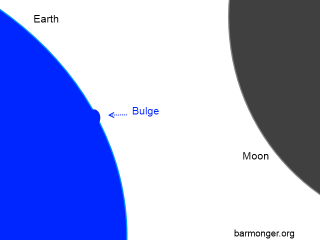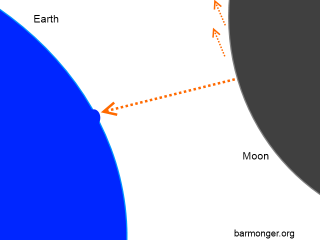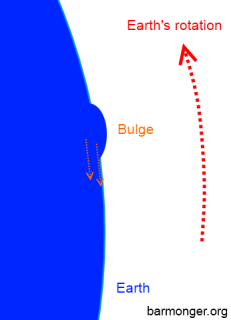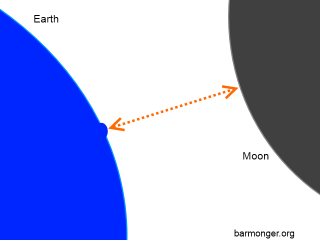This is part 3 in my series on 'Our beautiful moon and everything about it', you can find the first post is
here if you missed the beginning.
Previously I've talked about the
Moon's orbit around the Earth, its effects on us and the different
phases of the Moon.
In this post I'm going to talk about something quite amazing in the Earth-Moon relationship and why the Moon always shows the same side even though it rotates.
In the first post I mentioned that the Moon orbits the Earth once every month (roughly) and if you were to take a picture of the Moon once a day, you'll notice that the Moon always looks the same (disregarding the changing of phases). The dark areas and the craters all appear in the same place throughout the month. It is like the Moon is a fixed disk always facing the Earth.
But the Moon is also rotating around itself and around the Earth, shouldn't we see all the sides of the Moon at some point?
Well, yes and no. We have seen all the sides of the Moon in prehistoric times but today the Moon is locked in position so that the same side is always facing the Earth.
But how did this happen? What could cause a massive object like the Moon to do this? And what about the Moon's rotation?
Tidal forces
I talked about the cause in the previous post; it's gravity (or in this case tidal forces).
The tidal forces from the Moon is creating a "bulge" on the Earth (easily visible in water as tides but it also exists on dry land to a lesser extent) and this "bulge" is creating all sorts of fantastic events.
Edit: My representation of the bulge as a small easily discernible bulge on the surface is not entirely correct. Think of the Earth as stretching and the bulge being flattened out along the side of the Earth facing the Moon. The small bulge in the diagram just makes it easier to visualize.
Also, as mentioned in the first post, a similar bulge exists on the opposite side of the Earth.
Changes to the Moon's orbit
Being slightly ahead of the Moon (in its rotation) the bulge is pulling on the Moon (it has gravity, although not very much) and pulling it forward in it's orbit, making the Moon speed up. The higher orbital speed causes the Moon to go into a higher orbit and therefore it's moving away from the Earth a few centimetres a year.
Altering the Earth's rotation
Because the Moon is "ahead" of the bulge, the Moon is also pulling the bulge backwards at the same time (actually it's more accurately "braking" the bulge as the Earth is doing most of the moving here).
This causes the bulge to move in the opposite direction of the Earth's rotation and through the friction between the bulge and the Earth (again, it's very tiny) the Earth is slowing its rotation!
Tidal lock
Because of this the Earth will slowly slow down until its rotational speed matches the orbital speed of the Moon. Making it so that as time passes and the Earth rotates more and more slowly, the bulge will line up with the Earth's and the Moon's rotation and no longer pull the Moon forwards or the Earth backwards.
When this happens the Earth will make one rotation for every orbit of the Moon and one side of the Earth will forever face the Moon. But this will take billions of years because the Moon is only pulling ever so slightly on the Earth.
And that is why one side of the Moon is always facing the Earth; The Earth is pulling a lot more on the Moon and causing much greater tides, making the process much faster. This has caused the Moon to slow its rotation to the point where it takes the Moon one month to rotate once about itself, making it always face the same side towards us on the Earth.
This phenomenon isn't unique to us, it happens everywhere where Moons are tidally locked to their planets.
So there you have it; the reason the Moon has a near-side and a far-side and the reason it is tidally locked to the Earth.






0 comments:
Post a Comment